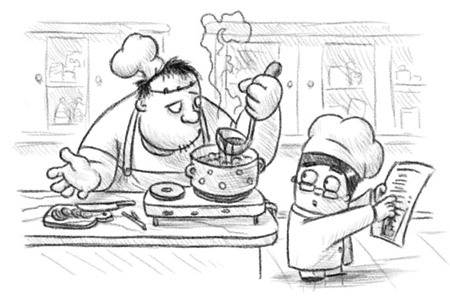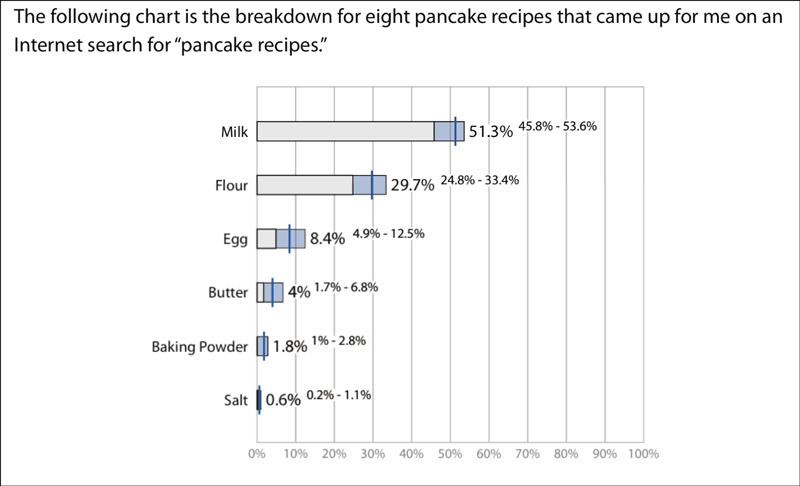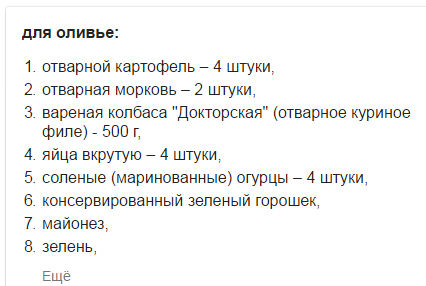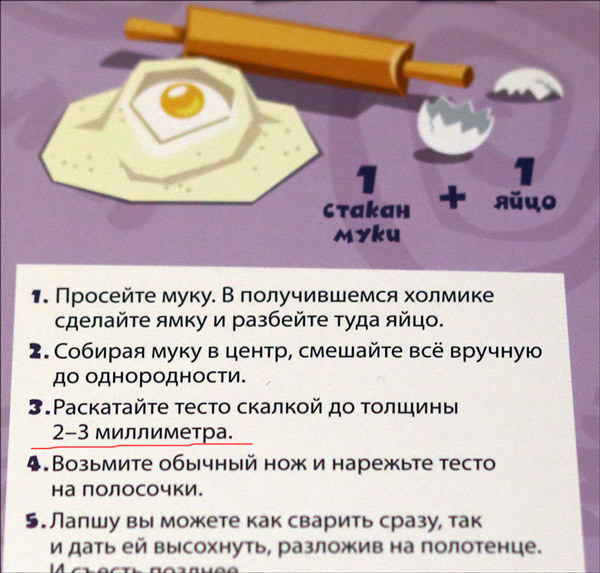Recipe interface

The first month of independent living in Moscow, I cooked fried potatoes and scrambled eggs. Then an understanding came that you could do other things, and I had to learn a little cooking. The first thing I did was decided to cook a soup of beans and potatoes. He opened the recipe, began to read, and there was a surprise.
"Cook until half ready." Well, damn it, how do I know how much it is? That is, I need to cook one portion, note the time, then throw it out and make the second one, right? Great plan.
')
Pizza dough - "salt and sugar to taste." Well, thanks, dude. When the pizza is baked, I can not sprinkle it on top with sugar or salt. Moreover, there is sugar there for yeast, but I don’t know how much it needs for its taste.
Then there were porridge and pilaf. It was proposed to pour so much water into the pilaf, so that rice could take it in half an hour. In porridge add so much pshenka to make it the consistency I need. If experiments were written like this in a school textbook on chemistry, then I am afraid that we would not have a laboratory a year earlier — not on organics, when we poured almost a liter of something wrong in the sink, but also at the stage of active metals, when It is necessary to throw a piece of metal in a test tube, and not pour water on the bar.

Surprises waited at every turn. "Half a tablespoon" is how much? What is your tablespoon, according to GOST, yes? How did you get it, with or without a slide?
“Cut into portions and fry for 8 minutes” - thanks, friends, I will definitely connect your external library with the standards of portions.
"Roll out the dough" - zarraza, to what thickness?

Here in the Cooking for Geeks recipe book, the guys got angry and even made a generalized recipe.
"Dissolve a bag of dry yeast" - which one?
“Take three apples” is also excellent. Three for 81 or three for 80?

The same with potatoes and carrots, and the situation does not change much over the centuries:

And here is an example of the Google Scorer right in issuing the “Olivier recipe”:

Another study of the issue showed that people are furious things like: "Use three quarters of oil." And butter was 3 tablespoons. What to do next?

Here the author is at least honest: I don’t know how to define it, but there is a suspicion that between an hour and a half.
It’s still very cool when a long recipe, sort of broken up into steps in order, suddenly ends "and add a spoonful of soda mixed with sauce and infused over low heat for 45 minutes." Check on attentiveness and logic - if not read in advance, buy a time machine.
IMHO, the recipe should be an algorithm, not a puzzle, assembled in a tricky form for compression. For beginners, you need to sort by time, in the form of the correct order of actions and intervals between them. Everything else is already for professionals, that is, it will be engineering interfaces for experienced users - cooks.
It so happened that six months ago I had to check the recipes in the game for children. Of course, I met almost all of the above. In general, when we worked on the games of the Fixi-Kitchen and Fixi-Bath fix series, there were quite a few recipes needed for the child to prepare. As for the experiences, and just later at home later. A child of 6-7 years old may be the first, and dad will be happy if everything comes out the first time. So I had to write a few simple rules. It turned out this:
- No variables for no reason — everything that cannot be checked on the spot right away is concretized into numbers. For example, in the case of pizza, it is necessary to give a specific amount of sugar and salt in the main recipe, and at the end to explain how to experiment on the following pizzas.

- Sizes like "spoon", "bag", "apple" are duplicated in grams or milliliters.
- All moments like how long to cook, how much roll, etc. they are supplied with either exact time or exact triggers (“as they come up - and another 30 seconds”, “until they turn black like a pirate soul”).
- “Before readiness” and other triggers necessarily contain a way to check this readiness. (For example, "when popcorn starts firing about once every three seconds.")
- Product shares should be counted in numbers. Half does not cause tension, but a third already need to be checked.
- The recipe is an algorithm without branches: no need to jump up and down on it to figure out how everything is done. Even if with this in mind, he will take twice as much space as text.
- If the recipe is complex and long - in the beginning it makes sense to specify the devices and materials. Or just to say that for this thing you need a convection oven, for example, and nothing else. For the purchase of products with a prescription is very convenient to have a card components separately.
- It makes sense to make separate from the prescription safety rules. For example - do not open the oven while cooking lush baking, do not leave the dishes with caramel to cool, and wash immediately and so on.
Everything. I hope after this the chances of “shooting yourself in the foot” in the kitchen of dad and son will slightly decrease.
Source: https://habr.com/ru/post/326642/
All Articles